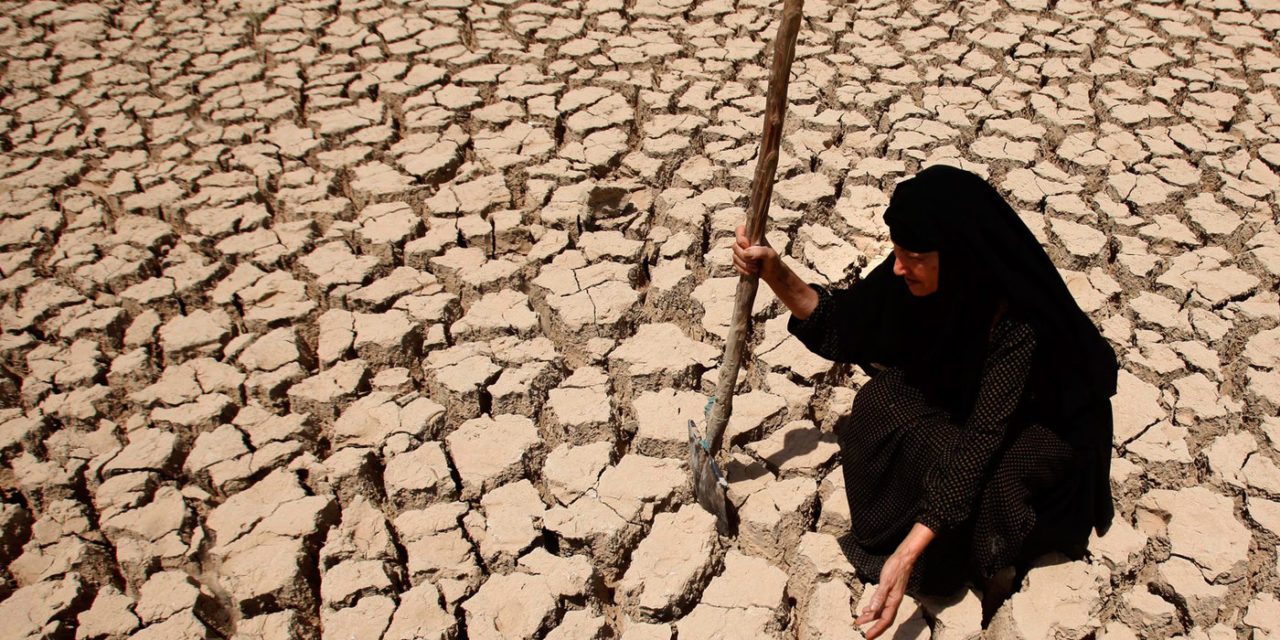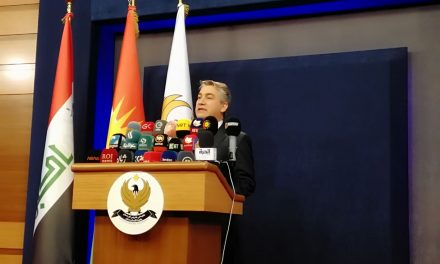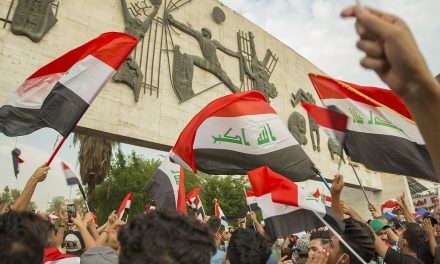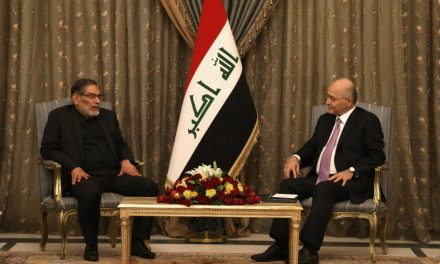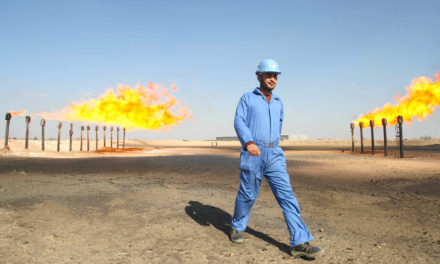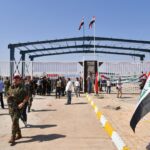(Hadi Mizban/AP Photo)
The area historically known as Mesopotamia, the cradle of civilization, is now suffering from an acute water crisis due to climate change and human actions. For the first time in history, millions of Iraqis who utilize the water supplied by the two great rivers Tigris and Euphrates for drinking, irrigation, power generating and transportation, fear a potential threat to these lifelines.
As many researchers have predicted many years ago, Iraq as part of the Middle East and North African countries, is facing a water shortage problem which is expected to be more severe in the future. Water supplies were reported to be 43 billion cubic meters (BCM) in 2015, and are predicted to drop to about 17.61 BCM in 2025, while the water demand is estimated to be between 66.8 and 77 BCM. According to the World Bank, the Iraqi water deficit in 2030 will reach 25.55 BCM (37%) where the expected supply is 44 BCM only. Worse, it is also estimated that the discharge of the Tigris and Euphrates will continue to decrease with time, and that it will be completely dry by 2040.
While the population of the world is increasing rapidly, the Middle East has shown some of fastest population growth rates. It is clear that Iraq, Syria and Turkey, the three countries that share the waters of the Euphrates and Tigris have record rapid growth in demand for the resources used by their people.
From a global climate change point of view as a factor affecting the water resource crisis, Iraq is considered to be one of the most vulnerable countries in the world to the potential impacts of climate change. The region which is already suffering from aridity, recurrent drought, and water scarcity is also witnessing an increased average temperature, erratic precipitation and sea level rise (SLR).
Five countries from the MENA region had record high temperatures in 2000, including Kuwait (52.6°C), Iraq (52.0°C), Saudi Arabia (52.0°C), Qatar (50.4°C), and Sudan (49.7°C) and were among the hottest 19 countries in the world. Furthermore, the MENA region contains hyper-arid, arid and semi-arid zones. Several research projects have concluded that arid and semi-arid regions are highly vulnerable to climate change.


Source: Management of Water Resources in Iraq: Perspectives and Prognoses
As shown in the two above figures, it is expected that the region will suffer from higher temperatures and decrease of rainfall in the next six decades and intense heat waves affecting inhabitants and crop yields, which will have negative impacts on fisheries and marine ecosystems. Fluctuating rates of rainfall, coupled with higher temperatures will likely cause more droughts and greater flooding, fluctuating sea levels, more intense cyclones and new areas exposed to dengue, malaria, and other ranges of waterborne diseases. Iraq will also suffer from more frequent sand storms.
Furthermore, the shortage of water in the rivers accompanied by low rainfall has a negative impact on agricultural land, rivers, lakes, livestock and the environment which led to desertification in many parts of Iraq.
However, the above factors are not all inclusive of affects on water and its shortage. Iraq was considered relatively rich in water resources compared to other neighbouring countries until the 1970s. Today it is facing water shortages due to the construction of dams by Turkey and Syria during the 1970s on the Euphrates and Tigris, which caused flow decrease and water quality deterioration.
Most of the water meandering down the lower reaches of the Euphrates and Tigris Rivers comes from the Turkish highlands. However, Turkey has taken bold action on this front with its decision in 1975 to undertake the Southeast Anatolia Project, also known as GAP. GAP is a project in the south-eastern Anatolia that contains 22 dams and 19 hydraulic power plants. It is proposed to irrigate 17,000 km2 of land. The overall water captured by this project is about 100 km3, which is three times more than the overall capacity of Iraqi and Syrian reservoirs combined. Furthermore, GAP is proposed to irrigate 1.82 million hectares which require 29 km3 of water, while the project stores 100 km3 in its reservoir.
Syria also built three major dams for irrigation and electricity generation with a total storage capacity of 16.1 km3.
The upstream development of the Euphrates and Tigris Rivers will contribute to water depletion in Iraq which will increase over time. This will reduce the quantity of water entering Iraq from the Euphrates River from 9 to 21 BCM to 9 BCM or less, which represents a drop of 28% to 75%. Syria is planning to double its irrigated area (740,000 ha) which will increase its water withdrawal from 5 BCM to 9 BCM. This will lead to diminished water for agriculture, greater land degradation due to expected high salinity, more drying of Iraq’s marshes causing more ecological damage, further deterioration of the Euphrates, less hydropower generation, increased risk of regional conflict and demographical implications where farmers and fishermen will leave their homes. Some analysts even see this issue as one of the major reasons behind extremist groups like ISIS.
It should be noted the quality of water deteriorates from north to south along the Tigris and Euphrates Rivers. It approaches a salinity of about 2000 mg/l in Basra, which damages the ecosystem in the Arabian Gulf even further.
By considering all these facts, it becomes clear that the Iraqi Government needs to take quick and firm actions to establish a water management strategy. Iraq needs to develop a vision on this regard, engage in regional cooperation and coordination, modernize irrigation, drainage, water supply, and sanitation systems, as well focus on research and development in this area. Iraq also needs to consider its legal options in response to the steps taken by Turkey based on international law, given that the latter is clearly in violation of it.

Shwan Mohammed
Shwan A. Mohammed is a PhD researcher in water and hydraulic structure engineering. He teaches at the Polytechnic University of Sulaimaniyah and specializes in ground water management.

